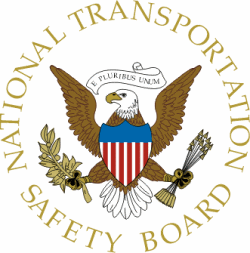Float Plane Was Carrying Cruise Ship Passengers On A Sightseeing Flight
The NTSB has released its preliminary report from an accident which occurred in Petersburg, Alaska, that resulted in the fatal injury of one of the seven people on board the float-equipped de Havilland Beaver.

The plane was on a sightseeing trip carrying passengers from a cruise ship docked in Petersburg on June 4. According to the report, one passenger was fatally injured when the plane went down. The certificated airline transport pilot and three passengers sustained minor injuries, and two passengers sustained serious injuries. The airplane was being operated by Pacific Wings LLC, as a VFR sightseeing flight.
During an interview with the National Transportation Safety Board (NTSB) investigator-in-charge (IIC) on June 6, the pilot stated that the accident flight was his fourth flight of the day, and his third tour flight that day. He said that weather conditions had deteriorated throughout the day with a ceiling of approximately 2,000 feet, light rain, and fog along the mountain ridges. He had departed from the Petersburg harbor en route to LeConte Glacier, via Horn Cliffs. He reported that while attempting to transit a mountain pass en route to LeConte Glacier, he initiated a left turn to avoid rising terrain and subsequently impacted the tree-covered terrain. The pilot stated that there were no preaccident mechanical anomalies that would have precluded normal operation.
As part of their company flight following procedures, Pacific Wings incorporates Spidertracks, which provides company management personnel with a real-time, moving map display of the airplane's progress. After returning from a flight, the director of operations for Pacific Wings was alerted that the flight track for the accident airplane had stopped transmitting along the anticipated route to LeConte Glacier. Unable to establish radio contact with the pilot, he initiated a search for the missing airplane.
About 1547, approximately 7 minutes after the accident, the United States Coast Guard (USCG) Alaska received a 406 Mhz emergency locator transmitter (ELT) signal assigned to the accident airplane.
At approximately 1614, after being notified of an overdue airplane, and after learning about reports of an emergency locator transmitter (ELT) signal along the accident pilot's anticipated flight route, search and rescue personnel from the U.S. Coast Guard Air Station Sitka, began a search for the missing airplane.

About 1816, the crew of a U.S. Coast Guard HH-60 helicopter located the airplane's wreckage in an area of mountainous, tree-covered terrain. A rescue swimmer was lowered to the accident site and discovered that one of the airplane's occupants died at the scene, and six others survived the crash. The six survivors were hoisted aboard the HH-60 helicopter, and then transported to Petersburg.
The NTSB IIC, along with an Alaska State Trooper, two volunteers from Juneau Mountain Rescue, and while being assisted by the United States Coast Guard, reached the accident site on the afternoon of June 5. The accident site was in an area of steep, heavily forested, mountainous terrain, at an elevation of about 912 feet mean sea level. The team was unable to perform an in-depth wreckage examination on scene due to the instability of the wreckage. A detailed wreckage exam is pending following recovery of the airplane.
The closest weather reporting facility was Petersburg Airport, approximately 14 miles west of the accident site. At 1536, an aviation routine weather report (METAR) at Petersburg, Alaska, reported wind, calm, visibility, 2 1/2 statute miles with light rain and mist, scattered clouds at 500 feet, broken clouds at 1,300 feet, overcast clouds at 1,800 feet, temperature, 52 degrees F; dew point 48 degrees F; altimeter, 30.03 in HG.
(Image courtesy Alaska State Troopers)
 Senator Pushes FAA to Accelerate Rocket Launch Licensing
Senator Pushes FAA to Accelerate Rocket Launch Licensing Classic Aero-TV: RJ Gritter - Part of Aviations Bright New Future
Classic Aero-TV: RJ Gritter - Part of Aviations Bright New Future Aero-FAQ: Dave Juwel's Aviation Marketing Stories -- ITBOA BNITBOB
Aero-FAQ: Dave Juwel's Aviation Marketing Stories -- ITBOA BNITBOB ANN's Daily Aero-Linx (10.27.24)
ANN's Daily Aero-Linx (10.27.24) ANN's Daily Aero-Term (10.27.24): Clearance Void If Not Off By (Time)
ANN's Daily Aero-Term (10.27.24): Clearance Void If Not Off By (Time)




